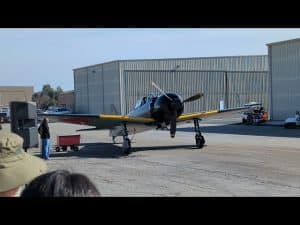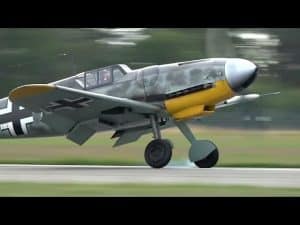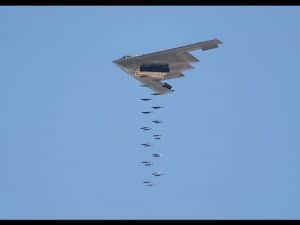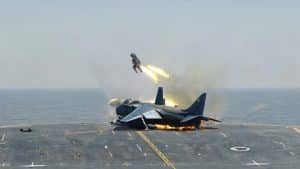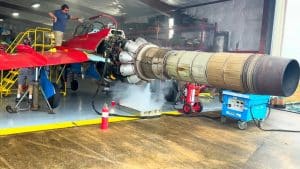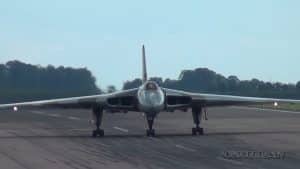Inside The Cockpit of the P-51D Mustang “Twilight Tear”
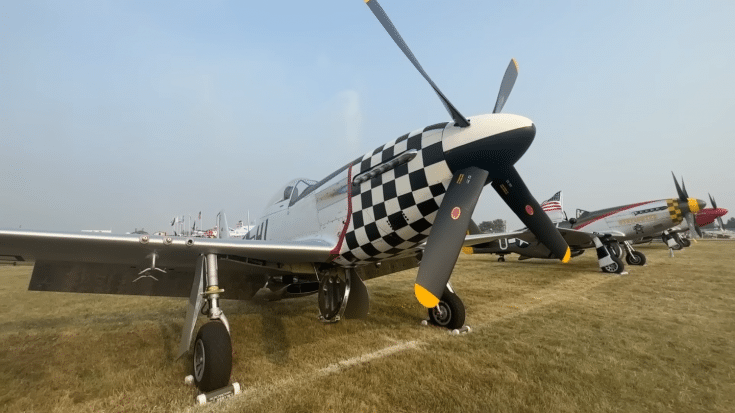
YouTube / Military Aviation History
In this post, we’ll follow Chris from Military Aviation History as he gives us a detailed tour of the iconic flying P-51:
Engine
The fighter is powered by a Packard-built Rolls-Royce Merlin engine that comes with either the -7 or the -3 variant and can produce up to 1,700 horsepower.
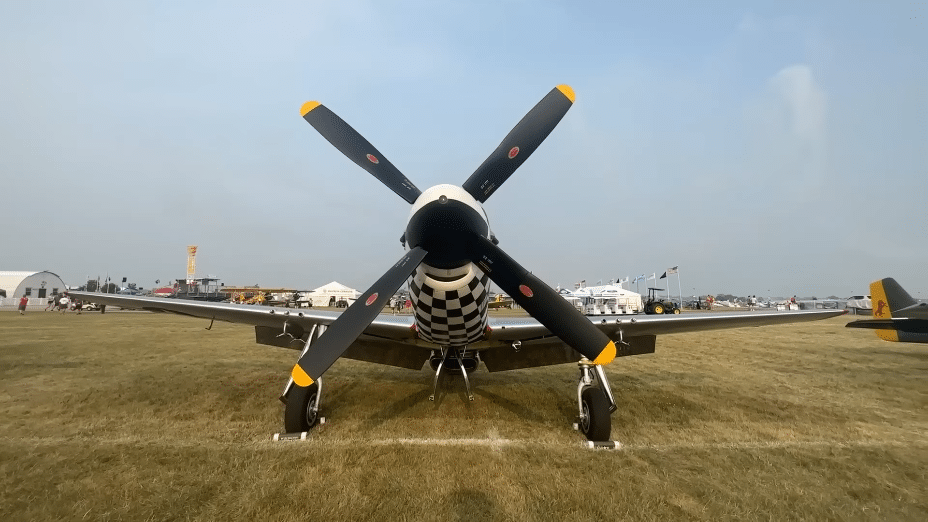
The engine features a two-stage supercharger and water injection. You can also see filtered carburetor intakes on the bottom and the actual carburetor on the front.
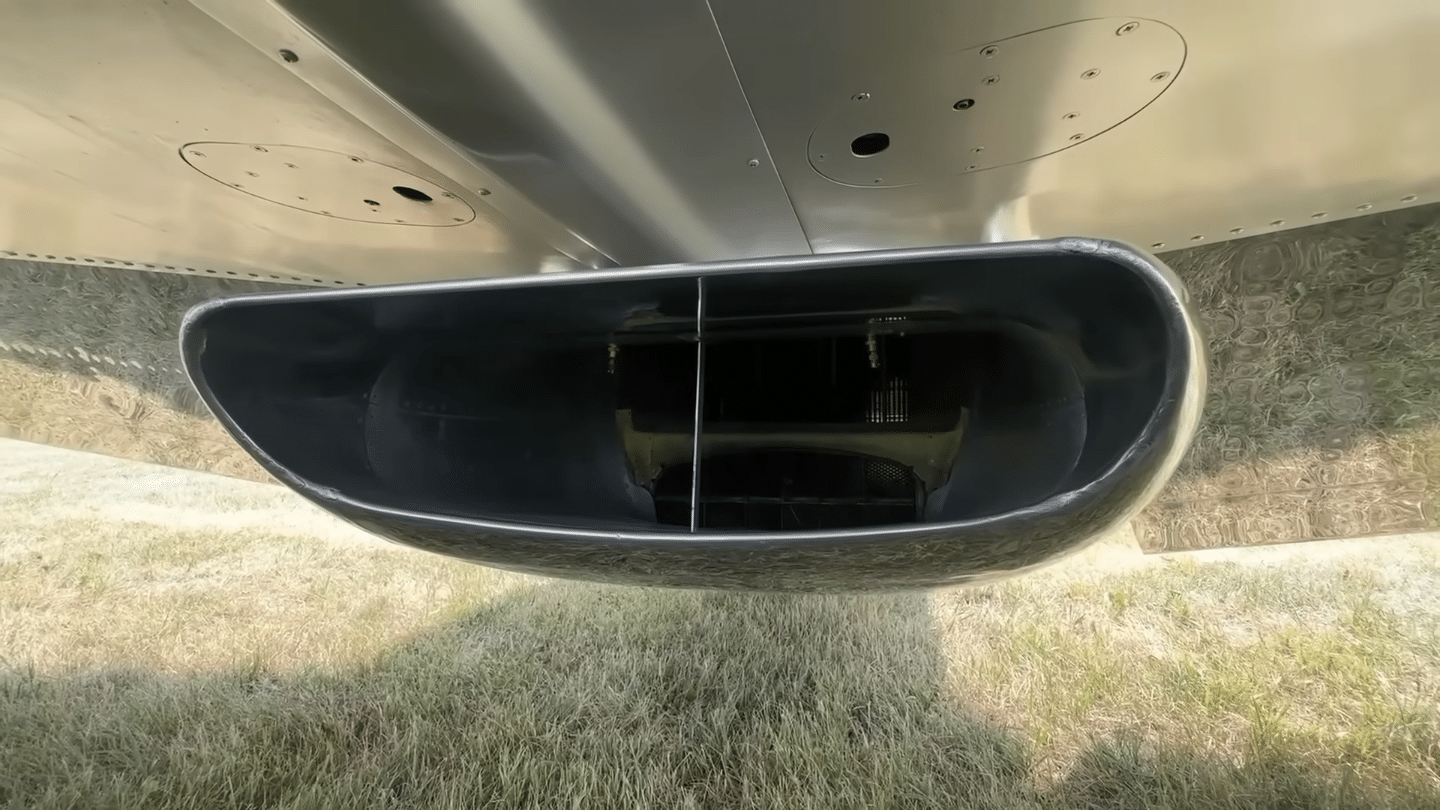
Wing & Fuselage
The jet has a low laminar flow wing. On the wing tip, we come across navigational lights and plain flaps.
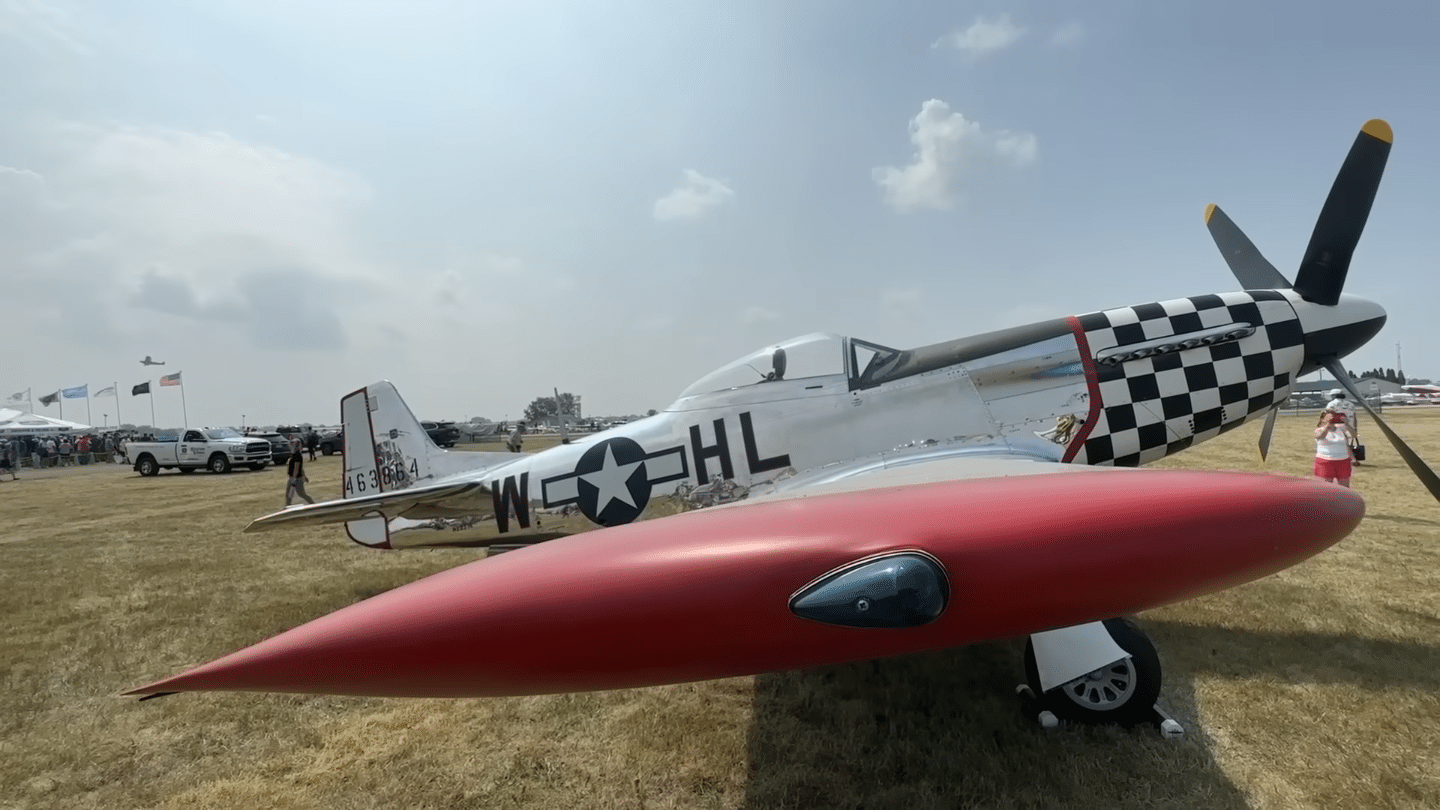
The P-51 is semi-monocoque and the weight goes from 7,000 to 12,000 depending on the load.
The Cockpit
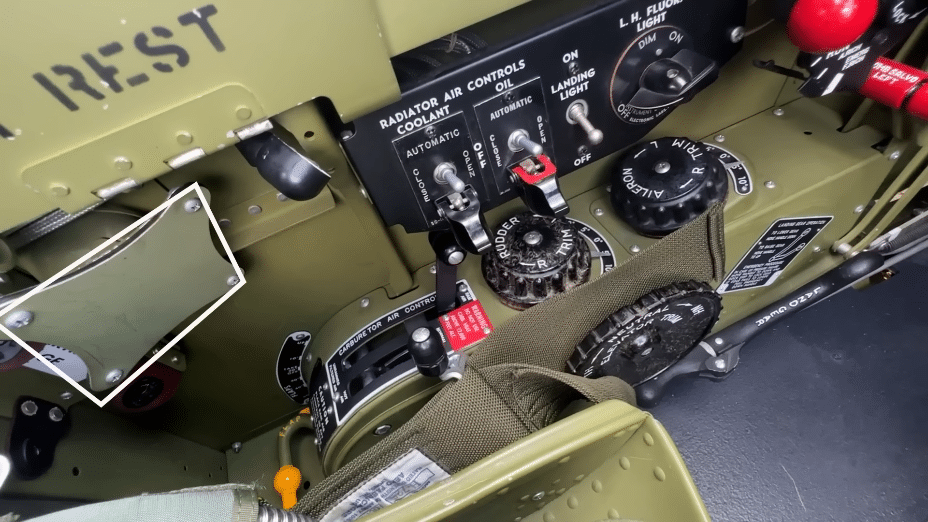
Starting on the left, there’s a control lever for the flaps, and carburetor air intake control level with a parallel carburetor heat control. Below the lighting control, you have three wheels for trim control and a landing gear lever.
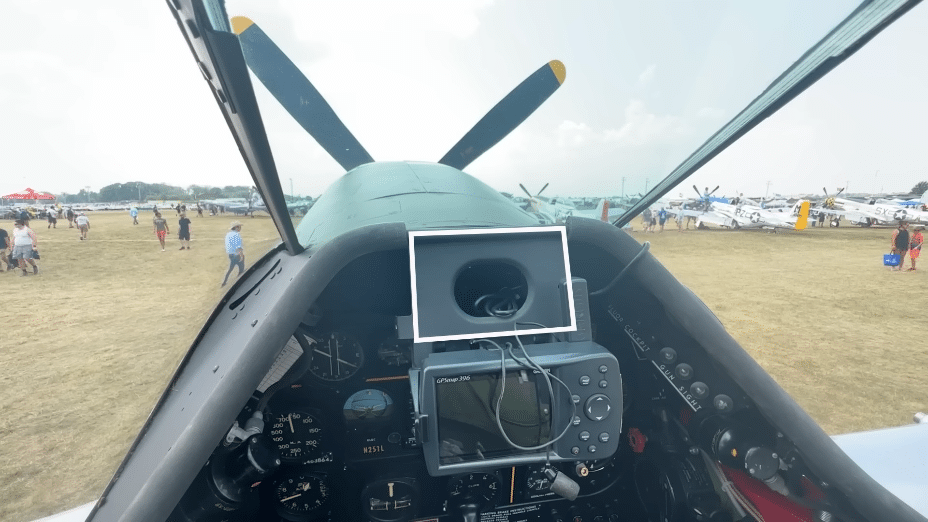
On the front, you’ll find the OG position of the gyroscopic gun site and a modern GPS.
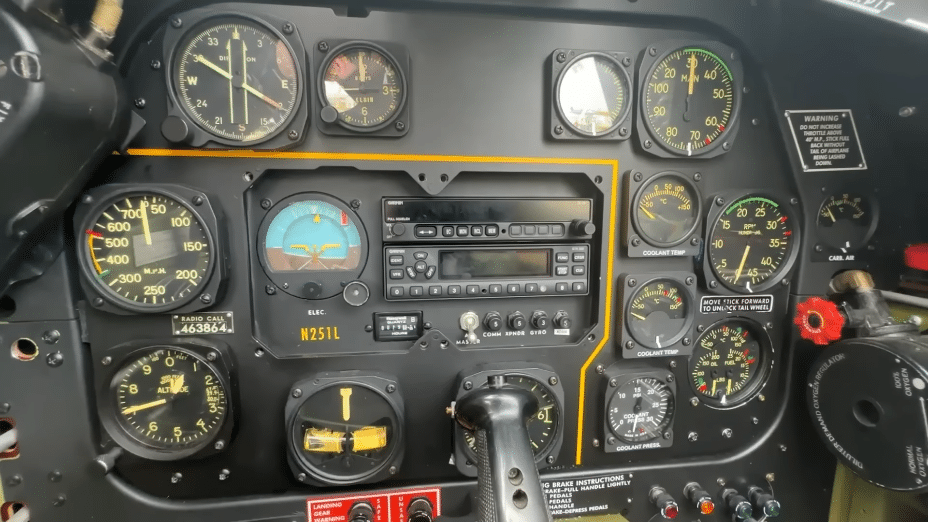
Other notable instruments are the directional finding compass indicator, speedometer, gyroscopic altitude indicator, and a modern radio set.
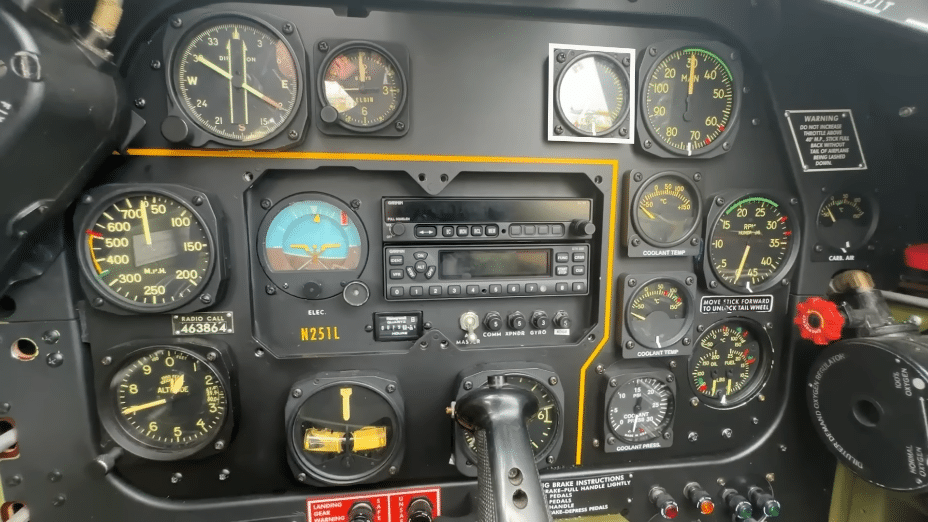
Moving to the right-hand side of the front instruments, there’s a suction gauge, manifold pressure indicator, coolant temperature indicator, and coolant pressure indicator. There’s also the engine RPM indicator and an oil and pressure indicator.
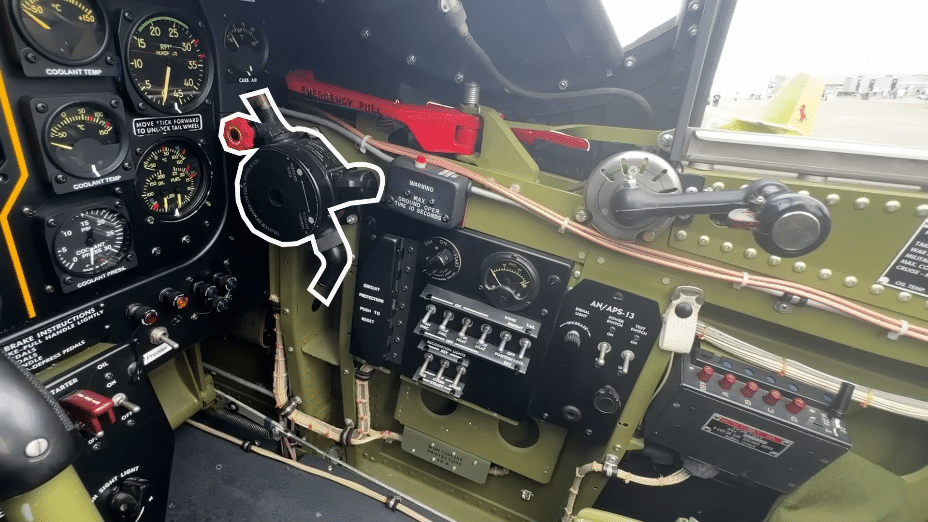
On the right-hand side, there’s an oxygen flow regulator followed by the electrical systems control panel and the APS3 control panel for the rear-facing warning system.
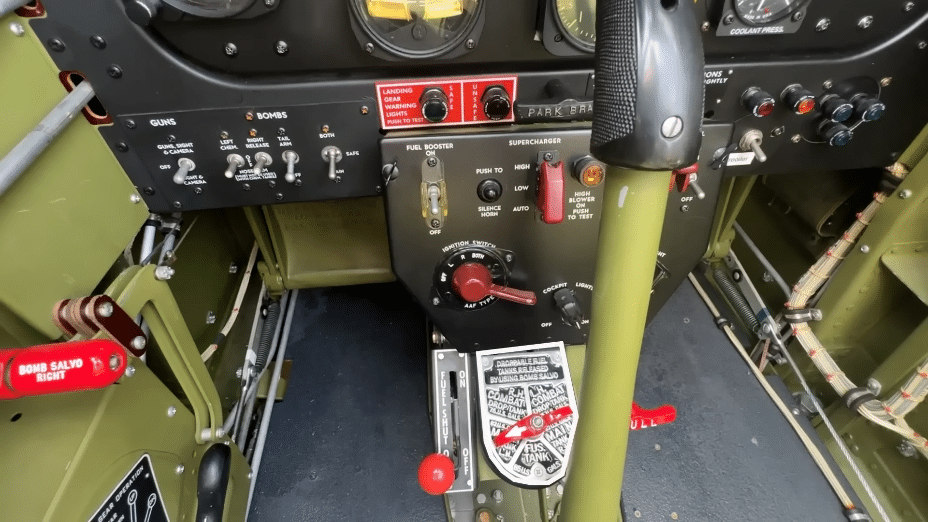
Behind the stick, you’ll come across the weapon control panel, further along the right is a parking brake and gear position indicators.
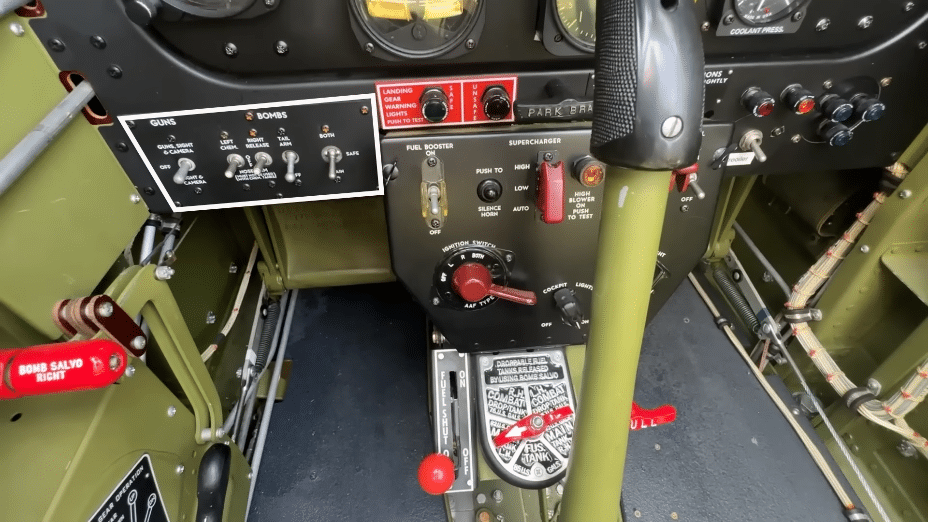
Further down, there’s the fuel cook beside the fuel tank selector and rounding up this station is the emergency landing gear release and the hydraulic pressure gauge.












